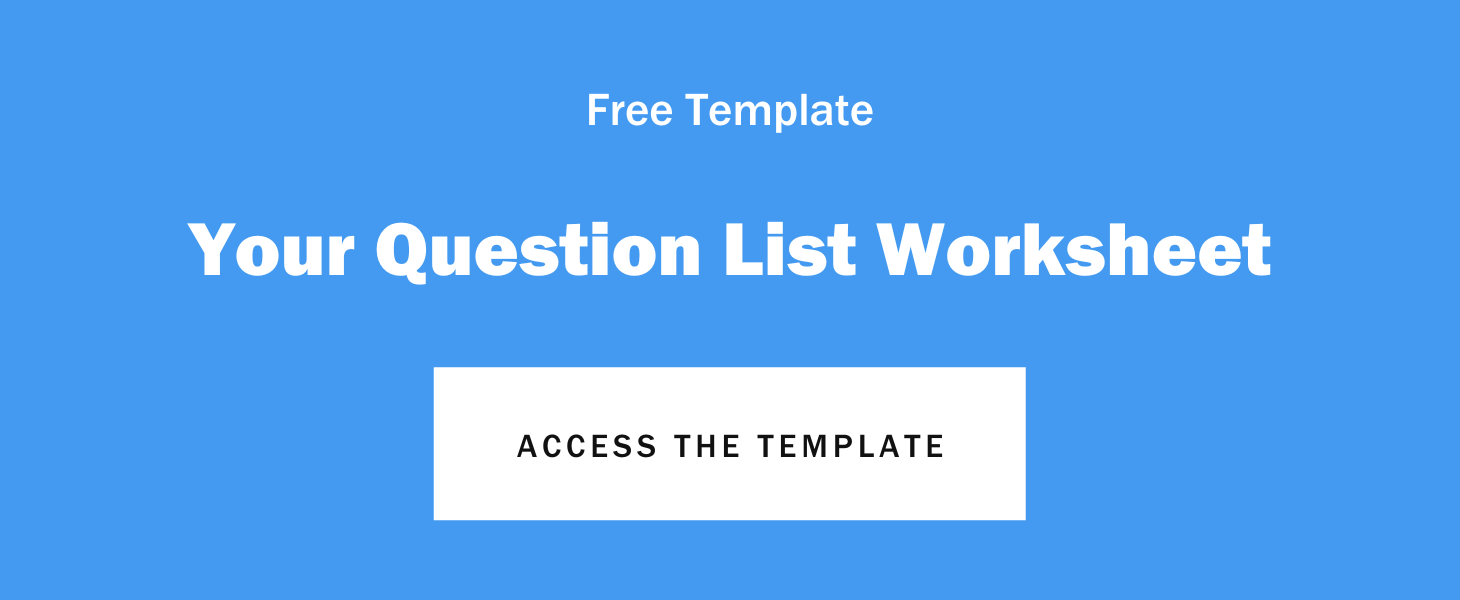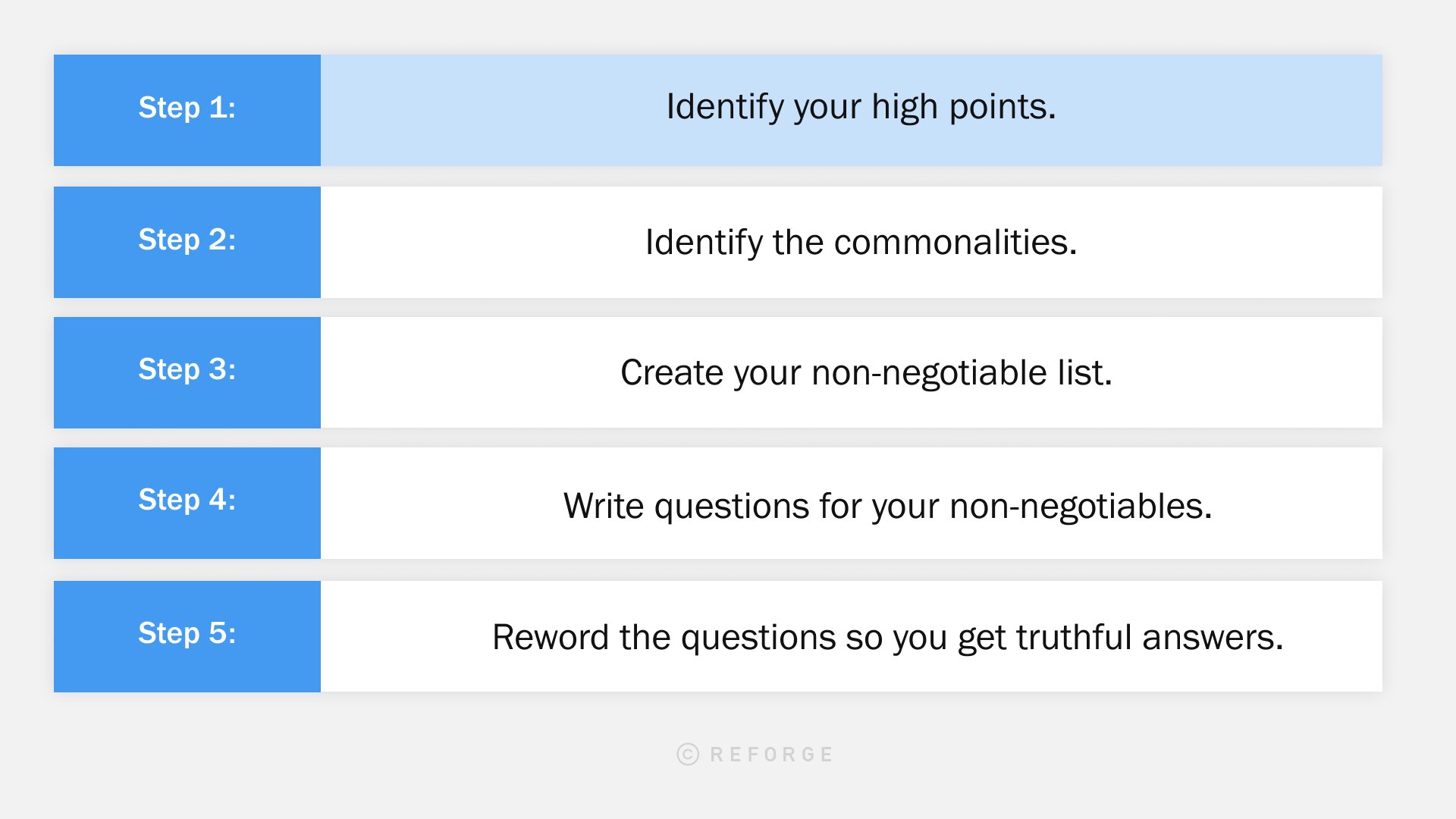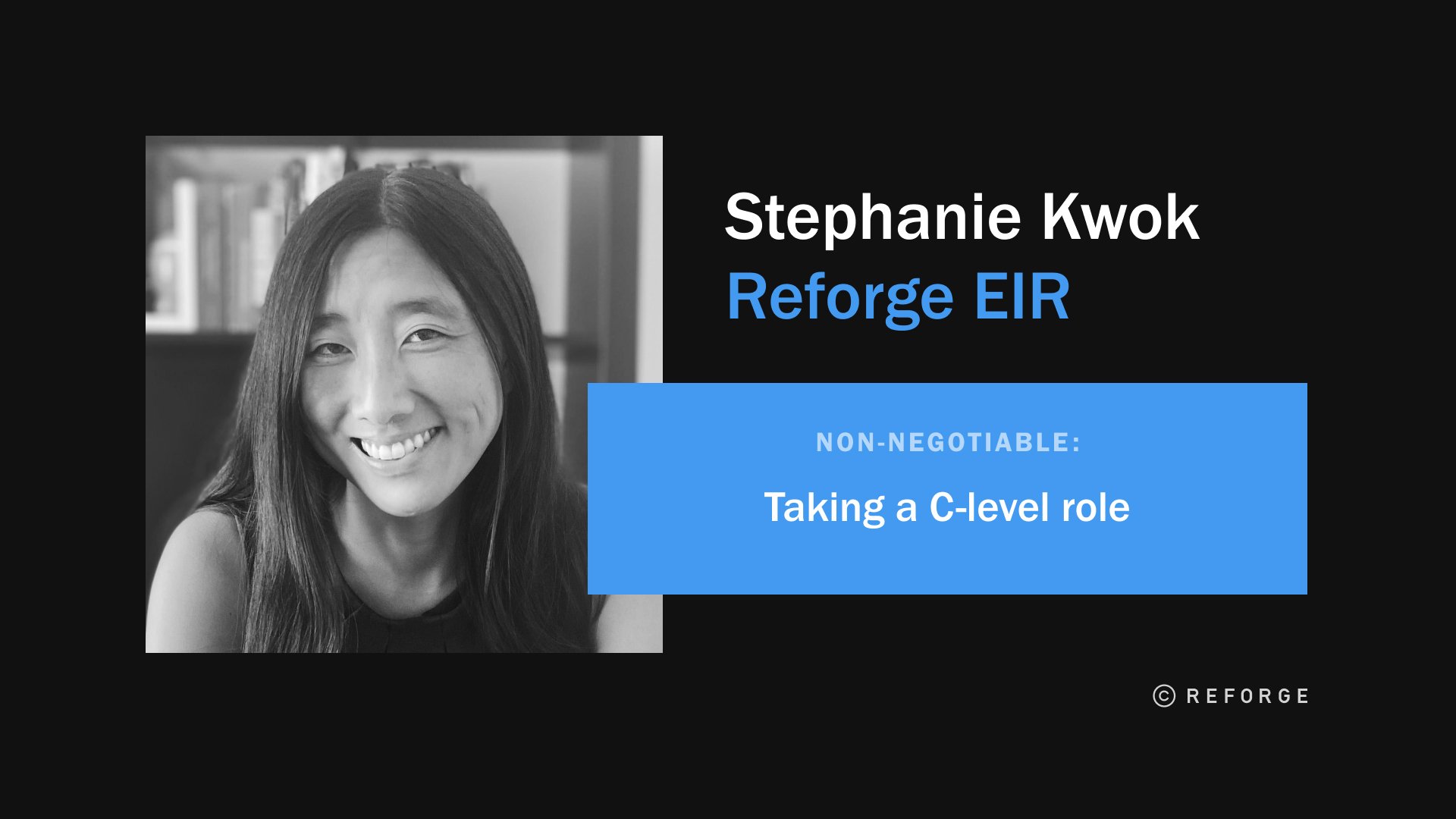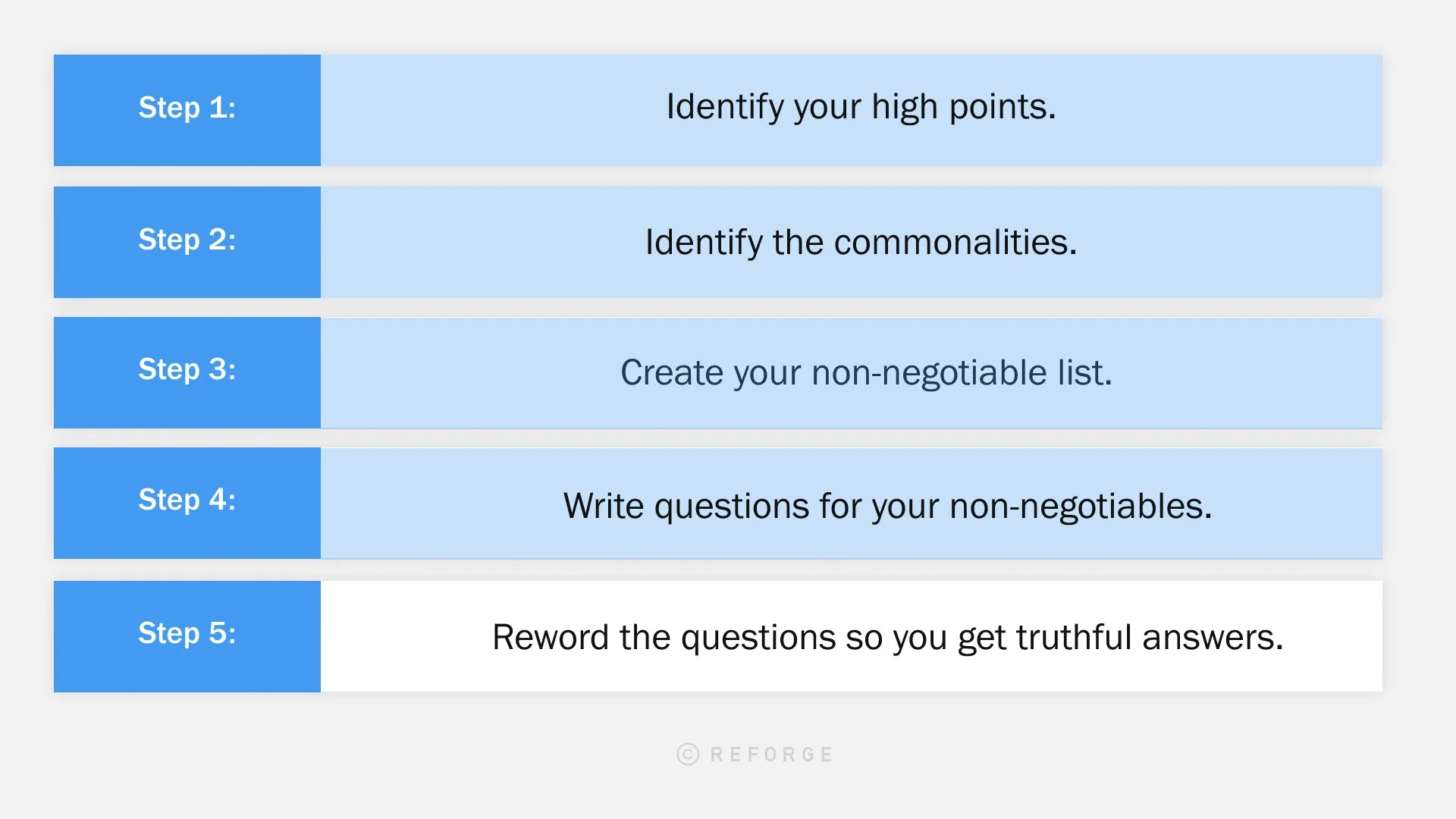As a hiring manager, I conduct a lot of interviews with very accomplished people.
At the end of most of those interviews, I get asked, “What do you like best about your company?” And I cringe just a little bit inside.
Mainly because these kinds of questions don’t actually help the candidate or the interviewer. They’ve become a largely performative and meaningless corporate ritual meant to fill the empty space at the end of an interview.
It’s unfortunate because the end-of-interview questions are extremely useful for candidates. If done correctly. But most people don’t know how to ask the right questions.
That’s why coined the Pivot Theory to help the next generation of employees ask better questions.
Our five-step Pivot Theory framework will help you identify your deeper needs while building a strategy around how, when, and who to ask about them.
You’ll walk away with a beautiful document visualizing your reverse interviewing strategy.
More importantly — you’ll reduce churn in your career and understand whether or not you’ll be happy, supported, and successful in your next role.
Let’s get into it!
Table of Contents
Meet the Author
Doa Jafri is an Operator in Residence at Reforge and an early-stage engineering leader. She most recently built and led teams at Glossier and Thrive Global.
The 5-Step Pivot Theory Framework
I suggest grabbing a pen and paper; some steps may take time, and having a physical reminder of your work will help keep it top of mind.
We also created a worksheet that you can use to start crafting your questions:
Through five steps, we’ll move from self-reflection to a tangible reverse interviewing strategy.
Step One: Identify Your High Points
So how can you develop questions that will help you make an informed decision?
Our five-step framework starts by identifying the high points across your career or extracurriculars.
As you think back on your professional life, make a list of moments where you felt like you were in the right place, doing the right thing, or working with the right people.
Ask yourself:
In what moments were you able to truly do your best work?
What moments made you feel fulfilled or accomplished?
When did you feel like you were the perfect person for the job?
When I asked myself those questions, one of the first moments that comes to mind was when I received the first customer feedback on a product that I had gone out on a limb to pitch. The feedback was incredible.
One particular customer said, “Thank you so much for bringing me happiness every single day at work.”
I felt so relieved, accomplished, and validated.
Once you’ve listed those high points, list a few scenarios that felt particularly bad. Moments where you were frustrated or felt you couldn’t do your best work.
The first negative scenario that jumped out at me was a meeting where I was showcasing my work on a new idea. The novelty triggered one of my co-workers, and he stood up and yelled degrading things at me, red in the face.
The worst part was that my boss was in the room, and he was too afraid to stand up for me or stop it. I felt needlessly attacked and deeply unsupported during a vulnerable phase of my project.
This part of the exercise can be tough, especially after working through your high points, but it’s critical to understand your most important needs.
You should aim for at least 2-3 high and low points, but feel free to keep flowing — the more, the better!
Step Two: Find the Commonalities
After outlining these extreme moments in your career, identify the commonalities you see in each situation.
While this may seem like a lot of work, this is the first exercise any career coach would ask you to do. Except we’re showing you how to do it for free.
Even experienced execs like Erika Warren, Head of Growth at Change.org, often walk away with new insights.
"After creating my list of high points, clear patterns emerged - some familiar, some new. I discovered that most of my peak experiences were the result of working closely with a brilliant, talented, thought-provoking person. In other words, a mentor. This is a very subjective and risky priority but finding the "who" within prospective companies became a big focus in my search."
For me, the two scenarios I described surfaced a clear pattern — I was pitching and creating a new product in both, which is very energizing for me.
In one scenario, I was at a company that empowered me and was comfortable with my experimentation.
In the other organization, there was a lot of competitiveness, ego-driven decision-making, and resistance to change.
I realized that it’s particularly critical for me to be in an organization that promotes change because my fundamental nature is to shake things up. More than other people, this is something I need to look for in potential future companies.
Be sure to take your time on this part of the exercise. Sometimes it takes a few days to truly digest these experiences and understand the commonalities.
Leave your notebook out somewhere visible as you steadily work through your commonalities. You might uncover a few more experiences in the meantime that really help you understand where you do your best work.
Step Three: Write Your Non-Negotiables
Once you spot these patterns, you can move on to step three — writing your list of non-negotiables.
Non-negotiables are the things you will never compromise for, no matter how desirable the salary, title, or perks are.
It may seem extreme, but it’s intended to be. There are an endless number of characteristics that you might prefer at a company or organization. But only a few key things are truly critical to your success and happiness in a company.
These are your non-negotiables.
For instance, while I would really love to work in a company that I’m a fan of, I could probably be happy at a company I’d never heard of.
That’s not a true non-negotiable.
However, I know that if I’m not allowed to be innovative and inventive, I’ll never truly be fulfilled based on my high and low points.
That’s a non-negotiable, and I stand by it.
Personally, I am drawn to early-stage startups because I know I can move mountains and drive impact. But if technology isn’t a real part of the company’s underlying strategy, I won’t really be making an impact, and there’s less of a need for me to have a seat at the table.
Another example of a non-negotiable could be “The ability to work face to face with customers.” Or simply “Everyone at the company works remotely.”
Recently, I adopted a non-negotiable from Austin Hay, Head of Marketing Tech at Ramp. He looks for companies where his “role and value is highly leveraged and multiplicative, not incremental.”
If you’re looking for inspiration, we asked a few executives to share some of their non-negotiables.
Adam Grenier’s non-negotiable is a company that can innovate for everyone, never despite someone.
“I grew up in a working-class family in Nebraska and have seen a lot of startups ignore those communities — especially when it comes to things like automating work. At Uber, I saw this first hand, so I tried to lean into opportunities that were very driver-centric and since have worked on businesses that I see as adding more access to education and training.”
While this may seem ambiguous, it’s a clear and important distinction you can look for. We all want to “do good”, but it can be hard to quantify that succinctly like Adam has.
Stephanie Kwok knows that a C-level role is non-negotiable, and for good reason.
“This is the next step in my career after holding multiple VP roles successfully. Ultimately, what’s most important to me is to work with people I respect, feel I’m valued appropriately, and have a seat at the table. This is important to affirm to myself that I’m qualified for the role and break the glass ceiling.”
I love this non-negotiable, qualified women like her are often talked into lower roles. A stance like this is the first step in legitimizing our needs and creating change.
Step Four: Write Questions for Your Non-Negotiables
Once you’ve identified your non-negotiables, you can move to step four, which is fairly simple: Write questions that directly address your non-negotiables.
Our customer example could translate easily from “Must work closely with customers” to “Will I be able to work directly with customers on a weekly basis?”
If your non-negotiable is phrased in a negative way, imagine the ideal situation and frame your question around that.
You can reframe a non-negotiable like “No first-time managers” into a positive question like “Will I have an experienced manager?”
For my needs, I might write, “Will I have the opportunity to pioneer new products?” and “Is the workplace competitive?”
The goal here is to transform your non-negotiable into a simple question that the interviewer can respond to.
Don’t spend too much trying to write the perfect question, this should be a very quick step.
Step Five: Reword Your Questions to Get Truthful Answers
Step five is all about breaking down and rewording your questions to ensure we get real insights rather than lip service.
For example, if you ask, “Will I be able to work directly with customers?” the answer will almost always be, “Sure! We love that! Sounds like a good idea!”
That doesn’t necessarily mean that you will work with customers. It also doesn’t tell you how often or deeply you’d work with customers. But for most people, it’s enough of a vaguely positive answer to trick you into believing you might work with customers every day.
So instead of letting the interviewer answer vaguely and positively — which they’re tasked to do — ask them questions that are based on experiences and data.
For instance, you could change “Will I be able to work directly with customers?” to “When was the last time you worked directly with a customer?”
This will give you a quantitative, truthful response. There’s much less room to bend the truth, and you’ll have an idea of how frequently you’ll work with a customer in this role.
In our second example, instead of asking about your potential manager’s experience, ask “Do you have any processes in place to support first-time managers?”
Or if they work with that manager, ask “How would you describe my manager’s working style?”
When asking these questions, push for clear and concrete answers. And don’t be afraid to ask follow-up questions to get more information if things start to get hand-wavey.
If all of their responses are overly vague or focused on what could be, they likely aren’t telling you the whole story.
Taking this tactical approach should help you accurately uncover what your day-to-day work might look like if you were to join that company.
Now that you have an understanding of the five steps in our framework, it’s time to apply Pivot Theory!
Applying The Pivot Theory
In this section, we’ll provide an application of Pivot Theory that applies to most people. If you’re short on time or struggling with wording, you can adapt questions from this section as starting points.
We’ll take the most common reasons people leave a company and pass them through the framework. Then, we’ll turn those questions into a strategy by discussing the time and place for each question.
Why Do We Leave?
In the wake of the Great Reshuffle, multiple studies were conducted over the past year to understand why people are leaving their jobs.
This data is a reflection of steps one and two of the Pivot Theory — a culmination of the experiences people have at work, and which ones most impact their happiness.
According to these studies, the top reasons that people leave their jobs are:
This list indicates the most common and important blindspots we have as job-seekers. These aspects of the workplace are either difficult to understand before joining a company or overlooked during interviews.
If we consider these reasons as our commonalities, we can use step three of the Pivot Theory to write the following non-negotiables:
The workplace must be positive and supportive.
I need to be able to grow within the company.
Must have an experienced manager or skip-manager.
Feel free to reword these to fit your needs. In the next section, we’ll convert these non-negotiables into questions that get real answers.
If you are struggling to come up with questions or non-negotiables, these three reasons that people leave their jobs is a great jumping-off point.
How to Ask the Real Questions, Without Feeling Awkward
So how do you ask about incredibly vague, and sometimes touchy topics?
I’ve spent a few years building products in the HR space, where I learned an incredible amount about organizational design.
The mechanisms that make up an organization are a sneak peek into the current challenges, successes, and culture of a company. And they give you a great avenue to ask direct, data-based questions about the hard-to-quantify parts of a culture. Like these examples:
To dive a bit deeper into Steps 4 and 5 of the Pivot Theory, let’s explore the systems, concepts, and ideas related to the top reasons people leave.
We’ll then use that information to craft questions that aren’t negative or awkward, but still, uncover important information.
Negative Culture Questions
Negative culture is tough to spot during an interview, and tougher to talk about with strangers.
In order to ask about “negative culture,” let’s first break it down into more digestible parts.
CultureX recently ran a sentiment analysis on Glassdoor reviews and found that employees were referring to one of five characteristics when they talked about negative culture. Those five characteristics were competitiveness, bullying, disrespect, inequity, and dishonesty. We can use each of those negative characteristics to design insightful questions.
Competitiveness, bullying, and dishonesty are usually perpetuated in organizations where that type of behavior is rewarded with “prizes” like a promotion or raise. From top to bottom, these organizations typically don’t have systems in place to regulate bad behavior. So it continues unabated.
One way to understand if these behaviors exist at a company is to examine practices around promotions and feedback systems.
How are promotions determined? Is there a public rubric or leveling system?
Do managers participate in calibration sessions during reviews?
Does the company collect 360 feedback, and how is that feedback leveraged?
Think of someone you’ve worked with who was recently promoted. What is it like to work with them?
Disrespect often exists when there is no way to report it, or when organizations value results over people. Examining collaboration and feedback systems can help you uncover if this is prevalent at a company.
If you witnessed wrongdoing on your team, who is the first person you’d talk to? (s this someone in a trusted position, ie. a manager, or a teammate?
Can you explain a daily scenario where I’m collaborating with team members on my team and cross-functionally? Is there room for back and forth, or are comms one-sided?
Tell me about a time you disagreed with someone at the company. How was it resolved?
Inequity often stems from unconscious bias, making it difficult to detect. However, you can look for lagging indicators that a company is inclusive.
Do you have Employee Resource Groups or Diversity Committees?
What are your current DEI initiatives? How long have you had DEI initiatives?
What percentage of the company is POC? What percentage of leadership, Director and above, are POC?
Once you understand which of these is most important to you, highlight a few questions that relate to your own non-negotiables.
Next, let’s break down growth opportunities.
Lack of Growth & Development Questions
Growing talent within your organization is a specific skill set that many companies don’t focus on. They prefer to go out and “buy” top talent and bring them in to shake things up.
Here are a few questions you can ask to understand if the company has honed its internal growth skills:
Can you think of anyone at the company who has made a lateral career move recently?
Will I have the opportunity to lead or grow a team?
Can you think of a leader at the company that was promoted from within?
Does the company provide 10% time or a stipend to support employee learning?
Do you have mentoring programs? Can you tell me about them?
Are there growth paths for ICs who choose not to go into management?
If growth opportunities are key to your happiness at work, select or modify a few of these questions.
Let’s move on to the last top reason employees leave a workplace– poor management and excessive workload.
Poor Management/Excessive Workload Questions
Poor management is sometimes difficult to evaluate because of individual preferences. Some people may thrive in one management or team structure, while others hate it.
Start by asking yourself how you like to be managed to determine the best answers to these questions. Then ask the hiring manager fact-based questions about the general workload to get a baseline.
Is your management style hands-on or autonomous?
How frequently should I expect to meet with my manager?
Does your management style involve giving me direction and tasks for execution, or expecting me to be proactive and come up with tasks and direction?
Tell me about your manager and their leadership style?
What is the earliest and latest you left the office this past week?
I’d recommend that everyone ask a question from this category – as the phrase goes, people leave managers, not companies.
Now that you’ve understood how to tactfully ask about the systems and mechanisms that indicate whether or not a company has negative culture, growth opportunities, and poor management, let’s move to broader patterns you can look for outside of your reverse interview.
Broader Interview Patterns
In addition to those specific questions, it’s also important to take note of larger patterns you see across the interview process.
Kira Klaas, Global Head of Campaigns at Notion, looks for consistency in vision across all the interviews.
“When interviewing, I’m listening carefully to the vision, goals, and challenges described by different interviewers, especially by the hiring manager, senior leadership, or founders. If they each describe a different company mission, product roadmap, or brand vision, that could signal internal turbulence or indicate that it might be challenging to get to a consensus, align on strategy, or move projects forward. The vision evolves, of course, as a company grows, but consistent answers among leadership indicate that the team is aligned—rather than chasing competition, focusing on growth for growth’s sake, struggling to find market-fit, and so on.”
Andrew Strickman, former marketing leader at Yahoo!, Realtor.com, and Care Access, looks for founders with work experience.
“I connect best with executives who have spent time in the workforce and who mirror the effective leadership and management they witnessed as an employee to bring both high IQ and EQ to their role.”
And finally, Fareed Mosavat, Chief Development Officer at Reforge, looks for a collaborative and high-trust environment.
“Great products are built by teams that collaborate well cross-functionally and operate with strong trust and independent decision making. It’s also significantly more fun to work in creative and collaborative teams. When I’m interviewing, I want to know why they are hiring for this role, understand how the previous leader failed or succeeded, and look for hints about how they talk about their peers, whether they cast blame, or point fingers.”
If your non-negotiables relate to any of the above patterns, consider taking notes during your interviews.
As they always say, always be reverse interviewin’.
Well, maybe not all the time.
Who To Ask
Now that you have identified a set of questions you might like to ask, you need to know when and where to ask them to get effective answers.
While you can likely only ask two or three questions in a five-minute timeframe, the average interview process has about five interviews, giving you ~25 minutes total to see if you really want to work for this company.
For this reason, it’s important to prioritize and plan who you want to ask each question.
Dana Starrantino, Senior Director of People at recruiting agency SingleSprout, says a typical interview process includes speaking to a recruiter, a manager, an independent contributor, someone from HR, and sometimes even a co-founder, depending on company size.
As a good rule of thumb, you’ll want to focus on basic questions about the role and team with recruiters or HR. Management style and larger cultural questions should be saved for a manager. And you should ask the independent contributors day-to-day culture and work questions.
In some processes, you may speak exclusively to managers. In this situation, don’t be afraid to ask for additional interviews to get the information you need.
As her candidates approach the offer stage, Dana connects them with newer employees that have been in the same position for ~6 months so they can talk about how realistic the goals are from an IC perspective.
To do the same, you could ask, “Is there someone in the same position who has been here for ~6 months that I can talk to so I can better understand their experience here?”
Don’t be afraid to ask the hard questions, or ask to speak to another person on the team!
Your Question List
Now let’s organize your all interview questions for easy access.
Fill out our free worksheet below with each person you’re interviewing. With an eye toward their role in the organization, choose a few questions that you’d like to ask them.
Tag each question with the purpose behind it, so you can quickly assess whether or not you’re getting meaningful data points for each of your non-negotiables.
Once you are done, it should look something like this:
Conclusively, we hope you’ve walked away from this article armed with both meaningful questions and a 5-step framework to develop questions that are hyper-personal to you.
These questions should be important enough that the answers would pivot your decision to join a company.
Let’s run through the process one more time:
Step One: Identify your high points
Start by making a list of companies, teams, or projects you’ve worked on. Which ones worked best for you, and why? Which ones were most challenging for you, and why?
Step Two: Find the commonalities
In both the positive and negative scenarios, what patterns do you see? What kinds of people are you around and what kinds of things are you doing?
Step Three: Create your non-negotiable list
Name the traits that create your ideal work environment. E.g. Must work closely with customers.
Step Four: Write direct questions
Ask about your non-negotiables, i.e. “Will I be able to work directly with customers?” If your non-negotiable is negative, imagine the inverse of that situation like, “Will I be working with an experienced manager?”
Step Five: Reword those questions so you get truthful answers
Reword your questions so that the answer isn't obvious, and focus more on facts and experiences than opportunities and people. For example, “When was the last time you worked directly with a customer?” instead of “Will I be able to work directly with customers?”
We hope with the Pivot Theory, you’re able to assess the company before you arrive.
When your workplace’s culture aligns with your needs, you’re able to grow, build meaningful relationships, and maintain a healthy work-life balance.
Make sure to switch your mindset during the last five minutes of your interview and put yourself in the power seat. Happy interviewing!















